We kept on passing Château de Beauregard when cycling to Chambord and Cheverny, so we finally scheduled a visit on a Sunday morning in March. We were surprised to run into friends from Montrichard who had just finished their visit! It’s a small world, isn’t it?
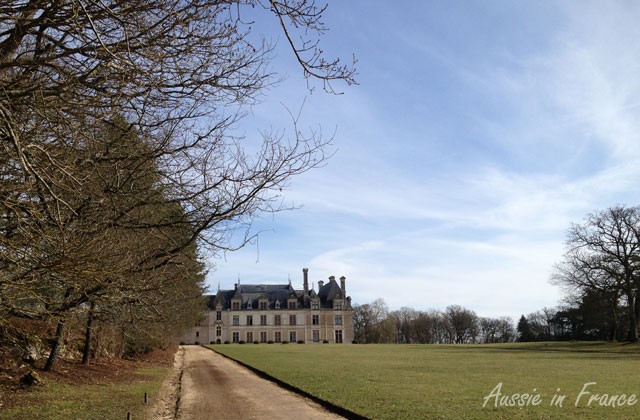
The château started off as a manor house in the 15th century and was confiscated from the owner, François Doulcet, by Louis XII when he was found guilty of embezzlement. François I used the house as a hunting lodge before giving it to his uncle René de Savoie who sold it to Jean du Thier, Henri II’s finance minister in 1545. Work carried out between 1553 and 1559 turned Beauregard into one of the finest châteaux in the Loire Valley. A gallery and an L-shaped wing were added to the original building.
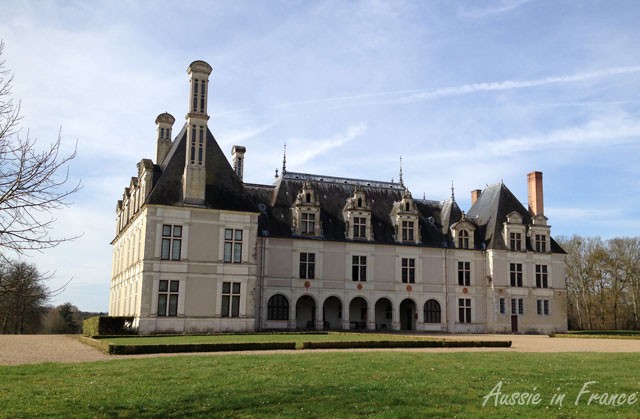
The harmonious Italianised architecture includes arcades in the gallery surmounted by terracotta medallions. Its high white chimneys “à la Chambord” are incrusted with slate. All that remains of Jean du Thier’s interior decoration, however, is the Cabinet des Grelots, his work cabinet, with its delicately sculpted caisson ceiling completed in 1554 by the royal cabinetmaker Scibec de Carpi. The name grelot is derived from Jean du Thier’s coat of arms: 3 gold bells (grelots) on a blue background.
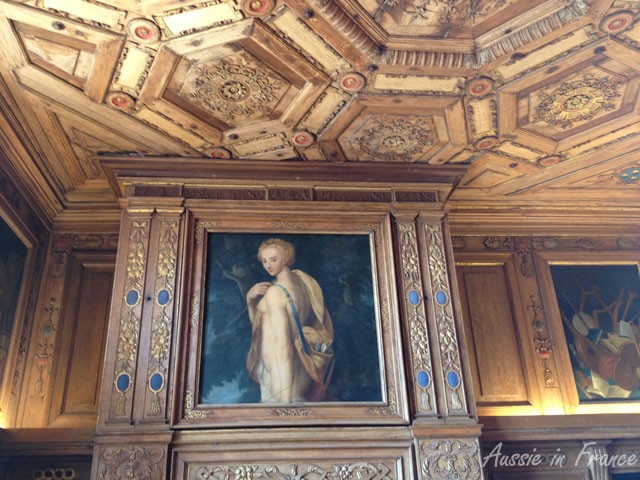
But it was Paul Ardier, Louis XIII’s minister who was responsible for its most prominent feature. After retiring from political life, he decorated the Grand Gallery between 1620 and 1638 with 327 portraits spanning three centuries (1328 to 1643), forming the largest collection of historical portraits in Europe. They are not all works of art, of course, but the collection is impressive.
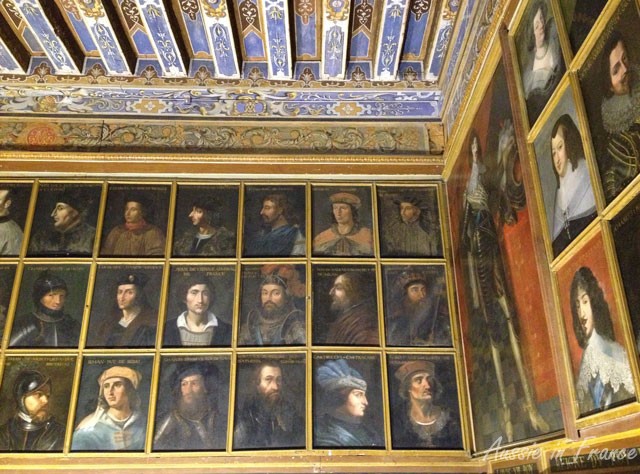
Ardier’s son and granddaughter added the Delft floor tiles, lapis lazuli ceiling and sculpted murals. The Ardier family left the château in 1816.
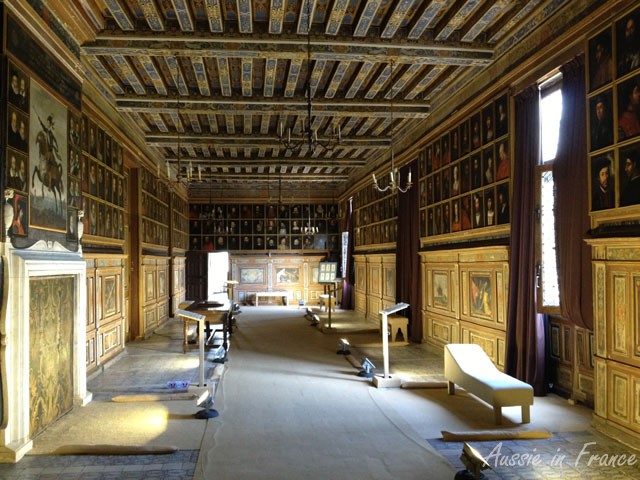
The west wing was destroyed in the 19th century and a second gallery built on the south side. It was modernised in the 20th century by the Tillier family before being bought by the Pavillon family in 1925. It was opened to the public in 1957. Restauration is ongoing and the landscaped park has now been completely restored.
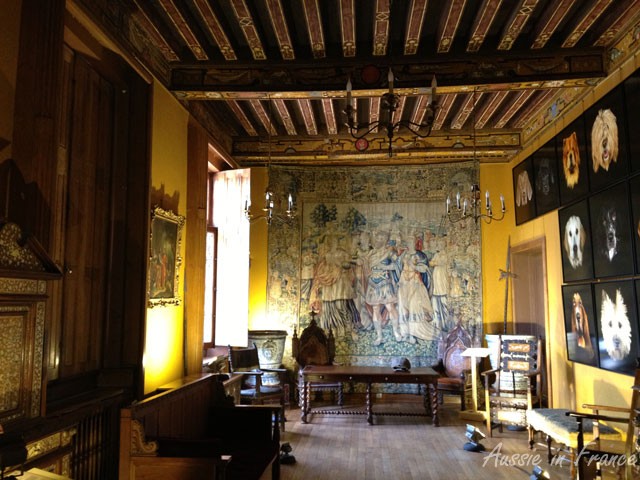
The château also houses a portrait exhibition of dogs owned by famous people. The International Animal Portrait festival was launched in 2012.
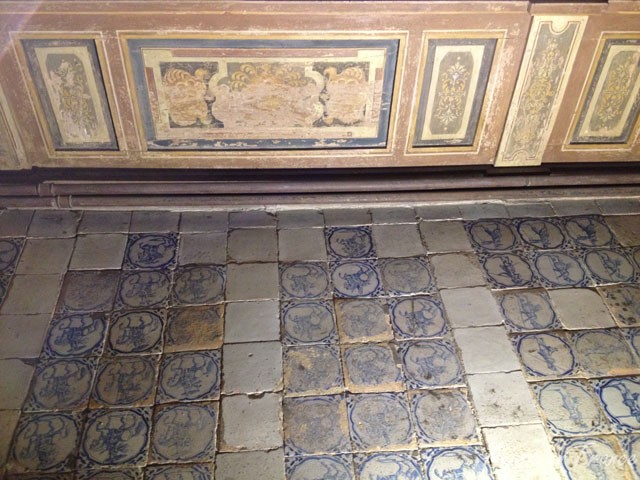
We did not explore the grounds which are obviously not their best in mid March. The Cabinet des Grelots and the Portrait Gallery in particular are quite exceptional but the other rooms are somewhat disappointing.
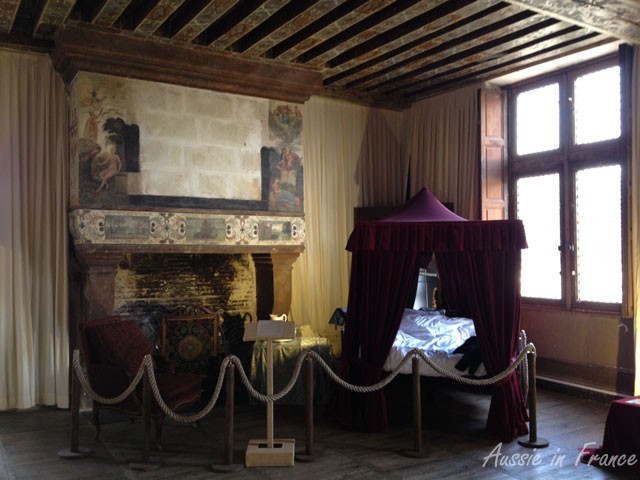
Some effort has been made to recreate the atmosphere in one of the bedrooms but I’m afraid it’s not very convincing. Dog lovers, however, will no doubt appreciate the exhibition, even if it seems a little incongruous.
Opening hours 18th November to 14th February, by reservation only (groups). 15th February to 30th March 11 am to 5 pm, 31st March to 29th June, 10 am to 6 pm, 30th June to 31st August, 10 am to 7 pm, 1st September to 2nd November, 10 am to 6 pm, 3rd November to 11th November, 11 am to 5 pm. Restaurant open from 10.30 am to 6 pm from 1st to 29th May, July and August. Prices Park and château : 12.50 euro (park only : 9 euro); children from 5 to 13 : 10 euro (park only : 9 euro)


